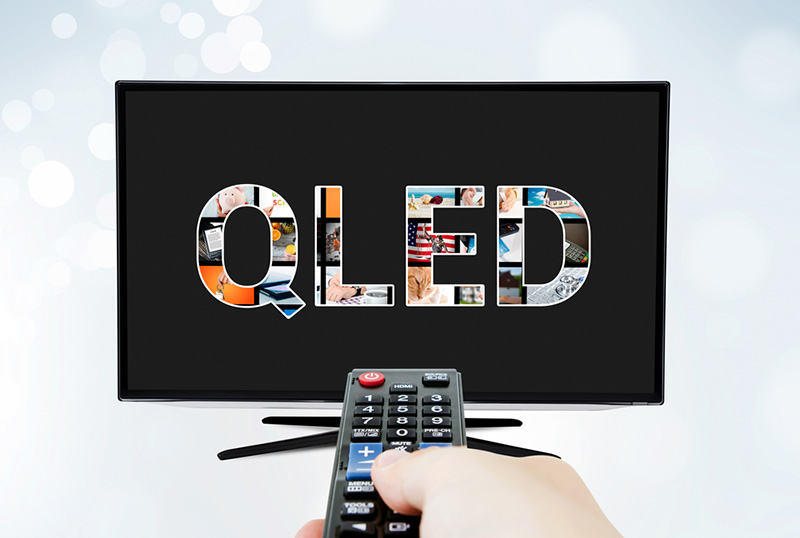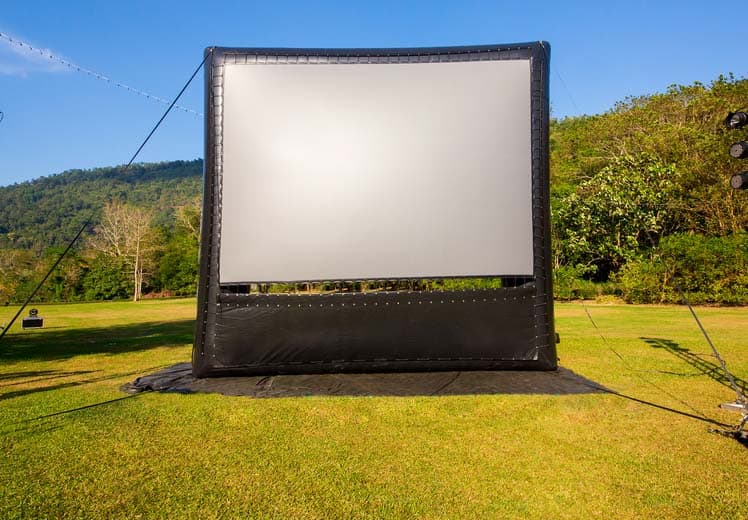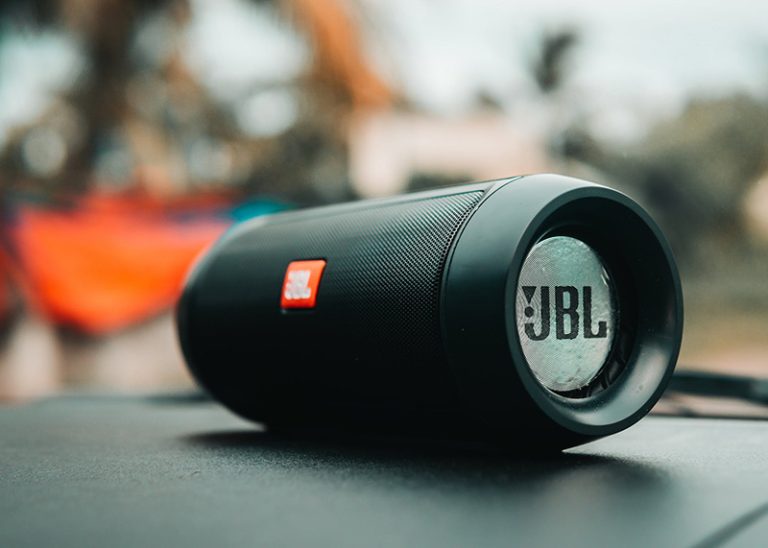Is it Worth Buying a QLED TV? (Honest Truth)
Are you looking to upgrade your TV set so you can binge-watch your favorite Netflix shows and movies in high quality? Wondering if the much-hyped QLED TVs would be a good choice and if they’re really worth the price? Here’s what we think.
It’s worth buying a QLED TV if your TV room has a lot of ambient light and you’re into gaming, or regularly watch movies, streaming services, and other HDR content. This is because QLED TVs have a rich color display and higher brightness which greatly enhances the picture quality.

However, these TVs do have certain drawbacks that you should weigh in before you make your purchase. Read on to find out if a QLED is worth your money.
To help you make your choice, we’ll be examining the pros and cons of buying a QLED TV. Let’s begin by understanding what makes a QLED TV different from other TVs.
Also read: Do You Need a Dolby Atmos TV To Get Dolby Atmos?
What is a QLED TV? How is it different from other TVs?
The term QLED stands for Quantum Dot LED. These TVs are essentially an upgrade on LCD and LED TVs.
So, how do they differ from LCD and LED TVs? Here’s a quick explanation to bring you up to speed.
LCD or Liquid Crystal Display TVs consist of- liquid crystals that control the light passing through them, a layer of color filters, and a backlight. The backlight creates a light, which passes through the liquid crystals and color filters to create the final image.
LED TVs (Light Emitting Diode) are basically LCD TVs, except that they use LED lights as the backlight instead of fluorescent tubes. These LED lights are either behind the screen (full array) or at the edge of it (edge-lit).
QLED TVs are different in that they add a layer of quantum dots or nanoparticles between the backlight and LCD panel. The special feature of these quantum dots is that they glow when they are illuminated. And since they are able to produce different wavelengths, they can produce a wide range of colors.
Thus, if you put it simply, a QLED TV is mostly an LED-backlit LCD TV with quantum dots.
But what about Mini-LEDs and OLED TVs- how are they different, you may ask?
Well, Mini-LED TVs are like other LEDs except they use much smaller LED backlights. This allows for more precise backlighting control and therefore better contrast, brightness, and black levels.
OLED TVs (Organic Light Emitting Diode) on the other hand, use a different type of technology. Unlike LEDs and QLEDs they don’t have a backlight. Instead, they use millions of self-lighting pixels that can individually turn off or change color. Their exceptional picture quality makes them a strong competitor for QLED TVs.
Why is it worth buying a QLED TV?
Here are a few reasons why you should consider upgrading to a QLED TV.
Enhanced Brightness
QLED TVs are extremely bright. The quantum dots in QLED TVs boost the light output of colors which gives them a much higher luminance compared to other TVs. As opposed to other conventional LED TVs, the brightness of QLED TVs is 50-100 times more.
Some of the high-end QLED TVs can go up to 2000 nits (nits are a measure of TV brightness). OLED TVs on the other hand, generally come in the range of 800 nits.
This makes a huge difference if your TV room has a lot of ambient light, or if you watch a lot of TV during the day.
Vibrant Colors
Quantum dots can produce different colors of light depending on the size of the particle in a given moment. For instance, smaller dots tend to appear blue while larger dots appear red.
As each dot is focused on one color, these TVs are capable of producing much more precise and brighter colors than regular LED TVs. For color-rich HDR content, this can make a world of difference.
Burn-in protection
Another advantage is that QLED TVs come with burn-in protection. Burn-in refers to the permanent marks or shadows that are left when static images are displayed on the screen over a long period of time. Take for instance, the health bar in a game or a news channel logo, or a scoreboard in a football match.
Burn-in is caused by the uneven degradation of pixels on the screen and can shorten a TV’s lifespan. Since quantum dots do not degrade over time, these TVs are less susceptible to burn-in and thus have a longer life.
If you’re an avid gamer or you watch a lot of news where there is static content, this might be the right TV for you.
Great for HDR content
HDR or High Dynamic Range content is known for its superior image quality thanks to its wide color gamut, increased brightness, and of course the high dynamic range between the darkest blacks and brightest whites. HDR pictures appear much more detailed and lifelike and you can see the nuance in both the bright and dark areas of the image.
QLED TVs, with their high luminance and vibrant color displays, allow you to maximize the benefits of HDR content and enable a more immersive experience.
What are the drawbacks of buying a QLED TV?
You’ve read about the pros, now it’s time for the cons of QLED TVs.
Narrow viewing angles
One of the major drawbacks of QLED TVs is that, because of the backlighting, the quality of the image comes down as you shift your viewing angle from the center. You’ll find the picture doesn’t look as great, both in terms of color and contrast, when you move your viewing position further toward the sides. This is an important factor to consider when you have multiple seats in your living room or TV room.
Blooming effect
QLED TVs are susceptible to the blooming effect which refers to the haze or halo around bright objects in certain scenes. Here, light from a bright object on the screen bleeds into the darker areas surrounding it. It ends up blurring the lines which otherwise should be sharp and creates a halo around the object.
Darker colors can appear washed out
QLED TVs aren’t able to provide the stark black levels and infinite contrast compared to OLED TVs. This is because of the blooming and light leakage from the backlighting.
Since the filters are not able to block 100 percent of the light, blacks can appear washed out. If you have a darkened home theater room, this drawback can be quite prominent.
The Bottom Line- Are QLED TVs worth it?
To sum up, QLED TVs are worth buying because of their vivid colors and amazing brightness. They can give you good value for your money, especially if you’re using them in your living room. What’s more, they have a long life.
However, for some home theater enthusiasts, the narrow viewing angles and washed-out blacks can be dealbreakers, particularly for those with darkened home theater rooms. Keeping the above factors in mind, you can decide whether it’s worth your investment.
References:
What is QLED TV? The quantum dot-based display tech fully explained
Advantages of QLED | disadvantages of QLED





